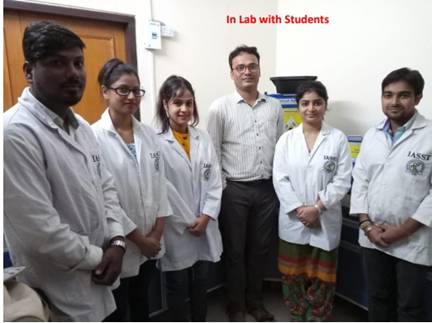IASST Inspire fellow developing plasmonic semiconductor nanomaterials to remove toxic materials from water
Biswajit Choudhury working as an Assistant Professorat the Institute of Advanced Study in Science and Technology Assam is exploring ways to develop plasmonic semiconductor nanomaterials (which are metal-like materials with free electrons on the surface that oscillate collectively when hit by light) for removal of toxic organic compounds from water by harvesting solar light. He is utilizing of solar light to increase the photocatalytic efficiency of nanomaterials to degrade pollutants as well as generate renewable Hydrogen.
In order to achieve this, the recipient of the INSPIRE Faculty Scheme initiated by the Department of Science &Technology, Govt. of India, is trying to understand the science behind the photon accumulation and amplification of incident light by the plasmonic materials for this purpose. Dr. Choudhury who is clustering the disciplines of physics, chemistry, and nanotechnology has published two papers on his current work in Solar Energy Materials and Solar Cells (2019, 201, 110053) https://doi.org/10.1016/j.solmat.2019.110053and ACS Sustainable Chemistry and Engineering (2019, 7, 23, 19295-19302) https://doi.org/10.1021/acssuschemeng.9b05823which focus on the use of plasmonic semiconductor nanomaterials for removal of toxic organic compounds from water by harvesting solar light.
The materials he is developing can easily adsorb toxic ions like arsenic and fluoride, which are often found in water in North East India and convert it to its not toxic forms when they are exposed to sunlight.
A further extension of this work is in the generation of hydrogen (H2) fuel from water, which can reduce the use of greenhouse gas-emitting fossil fuels. He is using plasmonic nanomaterials for hydrogen energy generation, a process which has shown high photon to hydrogen conversion efficiency under visible and near infra-red light.
The fellowship grant is helping him to design a photocatalytic set up to test the photocatalytic efficiency of catalysts in the lab scale. He is also collecting polluted water from various locations nearby and testing the removal of the toxic contents in water to make the water suitable drinking.

Fig: Biswajit Choudhury with his students in his lab
****
KGS/(DST)